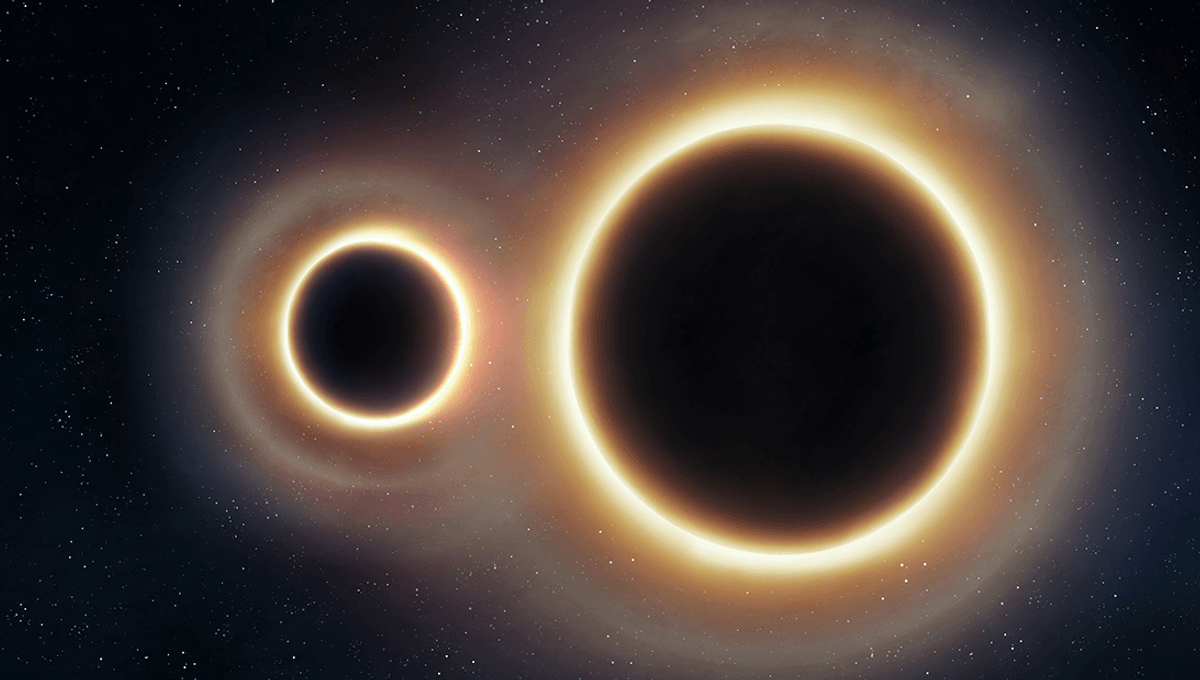
The Laser Interferometer Gravitational-Wave Observatory (LIGO) could potentially detect gravitational waves from an alien spacecraft as it makes its way through our galaxy, according to a team of physicists.
The LIGO experiment is awesome even without the potential for finding intelligent alien life. It was aimed at detecting gravitational waves (GWs) – ripples in spacetime, hypothesized over a century ago.
“Einstein first predicted gravitational waves in 1916 as a consequence of the general theory of relativity,” Barry C. Barish of the California Institute of Technology explains in a paper. “In this theory, concentrations of mass (or energy) warp space-time, and changes in the shape or position of such objects cause a distortion that propagates through the Universe at the speed of light (i.e., a gravitational wave).”
Detecting gravitational waves is tricky and requires sensitive equipment in LIGO’s two 4-kilometer (2.5-mile) long arms. But conceptually, it is quite simple to get your head around.
“All you need to build a gravitational-wave interferometer is two light beams, travelling between pairs of mirrors down pipes running in different directions, say north and west. The effect of a passing gravitational wave should stretch space in one direction and shrink it in the direction that is at right angles,” Ed Daw, Reader in Physics at the University of Sheffield, explains in a piece for The Conversation.
“On Earth, that would cause the mirrors to swing by tiny amounts, so that the distance between one pair of mirrors gets smaller, while the other gets larger. The swinging is actually the mirrors responding to the stretching and compression of space-time, which is just amazing.”
Detectors monitor subtle changes in distances caused by gravitational waves passing over the Earth, witnessing events that cause shifts less than 1/10,000th the width of a proton. Using this setup, LIGO became the first experiment to detect gravitational waves, and much more beyond that.
According to an international team of physicists, LIGO and its successors could be used to detect something a lot more exciting, and a lot more unlikely: alien spaceships.
“Since any system involving the bulk acceleration of mass produces GWs, new signal candidates include not only astrophysical and cosmological events, but also technological signals (technosignatures), such as those generated by rapid and/or massive accelerating spacecraft (RAMAcraft),” the team explains in their paper, which has not been peer reviewed. “We can already perform targeted searches for any such object simply by calculating its GW signal and plugging the result into existing detection pipelines.”
The idea here is pretty simple too. If a spacecraft has sufficient mass and accelerates fast enough, it too will produce detectable gravitational waves, though picking it out as a non-natural event would remain an incredibly tricky task. According to the team’s calculations, in order for such a craft to be detected by LIGO, it would have to be pretty astronomically large.
“We find on the upper end of our results that Jupiter mass RAMAcraft undergoing a change in velocity of Δ𝑣 ∼ 0.3 𝑐 are detectable from 10–100 kpc, or up to within range of about every star in the Milky Way,” the team explains. “On the lower end, we find that Moon masses undergoing Δ𝑣 ∼ 0.3 𝑐 are detectable from 1–10 pc, or at and beyond the distance to the nearest stars in our Galaxy.”
In short, if an alien species decided to create a spaceship the size of Jupiter and take it for a joy ride, accelerating it up to around 30 percent the speed of light, we could detect its gravitational waves from around 32,600 to 326,000 light-years away. Any smaller spacecraft (but still the size of the freaking Moon) undergoing similar acceleration could be detected from 3,260 to 32,600 light-years away. Future detectors may be able to detect smaller ships, or large ships undergoing smaller accelerations.
“We find that DECIGO and the Big Bang Observer (BBO) will increase the search volume for these objects by a factor of 106, while both LISA and PTAs may also provide benefits for detecting RAMAcraft undergoing long acceleration periods. More generally, the shifting of any detector frequency band by a factor 𝛿 < 1 will increase the detection range by 𝛿 −1 for burst searches and 𝛿 −1/2 for MF searches,” the team concludes.
“The prospect of improving our sensitivity to these objects is therefore promising, and is furthermore coupled to low-frequency detector improvements that are of a particular interest to the fundamental physics community as well.”
While an interesting idea, the team stress that unusual detections could still represent natural phenomena, and urge skepticism. Nevertheless, it’s good to know that this groundbreaking physics experiment could detect alien spacecraft, albeit as a side-effect of its work.
The study is posted to pre-print server arXiv.
Source Link: LIGO Could Detect Gravitational Waves From An Alien Spacecraft, But There's A Catch